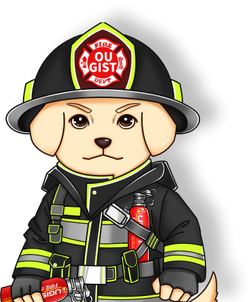Introduction
Understanding the classification of fires is essential for choosing the right fire extinguisher to effectively combat different types of fires. Fires are classified into different classes based on the nature of the fuel involved. In this blog post, we will explore the classification of fires and the suitable fire extinguishers for each class.
Fire Classification
Fires are generally classified into five different classes, namely Class A, Class B, Class C, Class D, and Class K. Each class represents a specific type of fuel involved in the fire.

Class A Fires
Class A fires involve common combustible materials such as wood, paper, fabric, plastics, and trash. These fires are typically fueled by solid materials.
Class B Fires
Class B fires involve flammable liquids and gases, such as gasoline, oil, grease, alcohol, and propane. These fires are characterized by the presence of liquid fuels.
Class C Fires
Class C fires involve energized electrical equipment, such as electrical panels, motors, appliances, and wiring. These fires occur when electricity ignites other flammable materials.
Class D Fires
Class D fires involve combustible metals, such as magnesium, titanium, sodium, potassium, and lithium. These fires are relatively rare and require specialized extinguishing agents.
Class K Fires
Class K fires involve cooking oils and fats, commonly found in commercial kitchens. These fires are typically associated with deep fryers and cooking appliances.
Suitable Fire Extinguishers for Each Class
Class A Fire Extinguishers
For Class A fires, which involve solid materials, the most common and effective fire extinguisher is the Water and Foam Extinguisher. These extinguishers work by cooling the burning material and creating a barrier between the fuel and the oxygen in the air.
Class B Fire Extinguishers
For Class B fires, which involve flammable liquids and gases, the most suitable fire extinguishers are Dry Chemical (ABC) Extinguishers and Carbon Dioxide (CO2) Extinguishers. Dry chemical extinguishers work by interrupting the chemical reaction of the fire, while CO2 extinguishers displace oxygen, smothering the flames.
Class C Fire Extinguishers
Class C fires involving electrical equipment require special care, as using water-based extinguishers can pose electrical shock risks. The most appropriate fire extinguisher for Class C fires is the Carbon Dioxide (CO2) Extinguisher. CO2 extinguishers are non-conductive and safe to use on electrical fires.
Class D Fire Extinguishers
Class D fires involving combustible metals require specialized extinguishing agents, such as Dry Powder Extinguishers specifically designed for metal fires. These extinguishers work by smothering the flames and inhibiting chemical reactions.
Class K Fire Extinguishers
For Class K fires involving cooking oils and fats, the most suitable fire extinguisher is the Wet Chemical Extinguisher. Wet chemical extinguishers create a foam barrier that cools the hot oil and suppresses the fire.

Conclusion
Knowing the classification of fires and understanding the suitable fire extinguishers for each class is vital for effective fire safety. The right choice of fire extinguisher can make all the difference in controlling and extinguishing fires promptly and efficiently. Ensure your home, workplace, or vehicle is equipped with the appropriate fire extinguishers, and remember to inspect and maintain them regularly to keep everyone safe from potential fire hazards.


